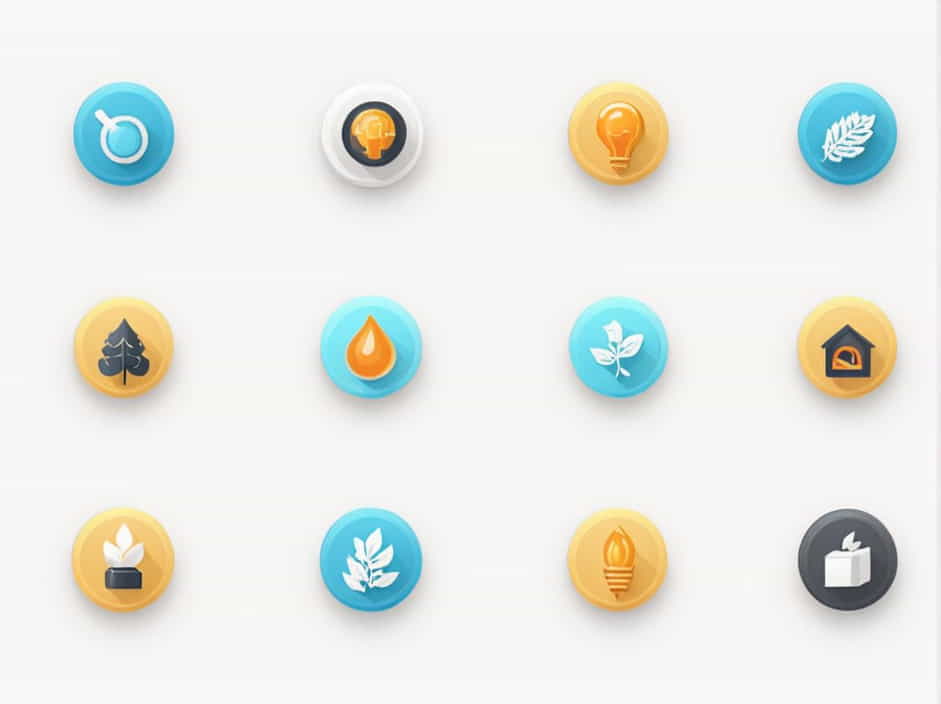Natural resources are essential for human survival and economic development. They provide the energy, materials, and food we rely on daily. However, not all resources are created equal. Some can regenerate quickly, while others take millions of years to form.
These resources are divided into two main categories:
- Renewable resources – Naturally replenished over time.
- Nonrenewable resources – Limited in supply and take a long time to regenerate.
Understanding the differences between these resources is crucial for promoting sustainability and ensuring responsible usage.
1. What Are Renewable Resources?
Renewable resources are natural resources that can be replenished naturally within a short period. They provide a sustainable source of energy and materials.
1.1. Examples of Renewable Resources
1.1.1. Solar Energy
- The sun provides an unlimited supply of energy.
- Solar panels convert sunlight into electricity without producing pollution.
1.1.2. Wind Energy
- Wind turbines harness air movement to generate electricity.
- It is a clean and sustainable power source.
1.1.3. Hydropower (Water Energy)
- Flowing water is used to generate hydroelectric power.
- Dams and hydro plants convert water movement into energy.
1.1.4. Biomass Energy
- Organic materials like wood, crops, and animal waste are burned to produce energy.
- Biomass is commonly used for cooking, heating, and power generation.
1.1.5. Geothermal Energy
- The Earth’s internal heat is used to generate power.
- It provides consistent energy regardless of weather conditions.
1.1.6. Ocean Energy
- Tidal and wave energy can generate electricity from ocean movements.
- This resource is still being developed but has great potential.
1.2. Benefits of Renewable Resources
✔ Environmentally friendly – Produces little to no pollution.
✔ Sustainable – Can be replenished naturally.
✔ Reduces dependency on fossil fuels – Helps combat climate change.
1.3. Challenges of Renewable Resources
✘ High initial costs – Setting up solar panels or wind farms requires investment.
✘ Intermittent supply – Sunlight and wind are not always available.
✘ Land and space requirements – Large-scale projects need significant space.
2. What Are Nonrenewable Resources?
Nonrenewable resources are natural resources that cannot be replenished within a human lifetime. Once used, they take millions of years to regenerate.
2.1. Examples of Nonrenewable Resources
2.1.1. Fossil Fuels
Fossil fuels are the main source of global energy but are highly polluting.
- Coal – Used for electricity generation, but emits high levels of carbon dioxide.
- Oil (Petroleum) – Essential for transportation and manufacturing.
- Natural Gas – A cleaner fossil fuel, but still contributes to pollution.
2.1.2. Nuclear Energy (Uranium)
- Uranium is used in nuclear power plants to generate energy.
- Produces low emissions, but creates radioactive waste.
2.1.3. Metals and Minerals
- Iron, copper, gold, aluminum, and rare earth elements are crucial for industry.
- Mining damages ecosystems and depletes these finite resources.
2.2. Benefits of Nonrenewable Resources
✔ High energy output – Fossil fuels provide a powerful and stable energy supply.
✔ Established infrastructure – Most industries rely on them.
✔ Easier to store and transport – Unlike solar or wind, which need batteries.
2.3. Challenges of Nonrenewable Resources
✘ Finite supply – Will eventually run out.
✘ Environmental impact – Causes pollution and contributes to climate change.
✘ Mining and extraction damage – Harms ecosystems and water sources.
3. Key Differences Between Renewable and Nonrenewable Resources
| Feature | Renewable Resources | Nonrenewable Resources |
|---|---|---|
| Availability | Unlimited supply | Limited, will deplete |
| Replenishment Time | Regenerates quickly | Takes millions of years |
| Environmental Impact | Low pollution | High pollution and emissions |
| Sustainability | Sustainable | Unsustainable |
| Examples | Solar, wind, water, biomass | Coal, oil, natural gas, uranium |
4. The Importance of Resource Conservation
With population growth and increasing energy demand, managing natural resources is critical for sustainability.
4.1. Transition to Renewable Energy
- Many countries are investing in solar, wind, and hydropower.
- Electric vehicles (EVs) and improved battery technology are reducing reliance on fossil fuels.
4.2. Energy Conservation
- Using energy-efficient appliances and reducing electricity waste helps conserve resources.
- Smart grids and better insulation in buildings lower energy consumption.
4.3. Recycling and Reuse
- Metals, plastics, and glass should be recycled to minimize waste.
- A circular economy ensures resources are reused efficiently.
4.4. Sustainable Extraction and Mining
- Governments are enforcing eco-friendly mining techniques to reduce environmental damage.
- Stricter laws protect forests, water sources, and endangered species from exploitation.
5. Future of Renewable and Nonrenewable Resources
5.1. Advancements in Green Technology
- Research is improving solar panels, wind turbines, and energy storage.
- Hydrogen fuel is emerging as an alternative to fossil fuels.
5.2. Phasing Out Fossil Fuels
- Many countries are setting net-zero emissions targets.
- The shift to electric vehicles and renewable-powered industries is growing.
5.3. Global Climate Agreements
- The Paris Climate Accord and other agreements aim to reduce carbon emissions.
- Industries and governments are working toward clean energy solutions.
Understanding the difference between renewable and nonrenewable resources is essential for a sustainable future. While nonrenewable resources like coal, oil, and metals still dominate, the world is gradually shifting toward renewable energy sources like solar, wind, and hydropower.
To ensure long-term sustainability, we must focus on:
✔ Using more renewable energy.
✔ Reducing waste and pollution.
✔ Recycling and conserving natural resources.
By making responsible choices today, we can protect the planet and ensure that future generations have access to the resources they need.
